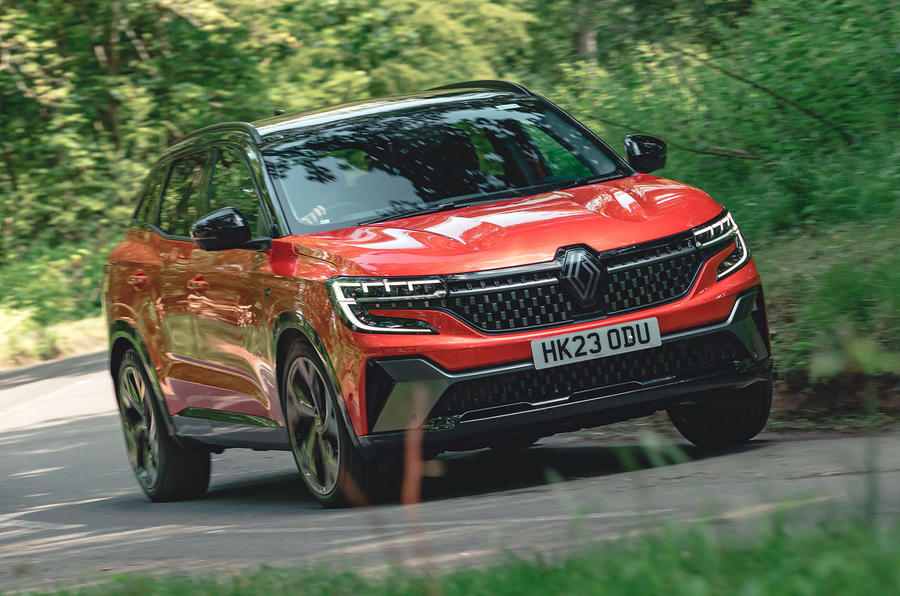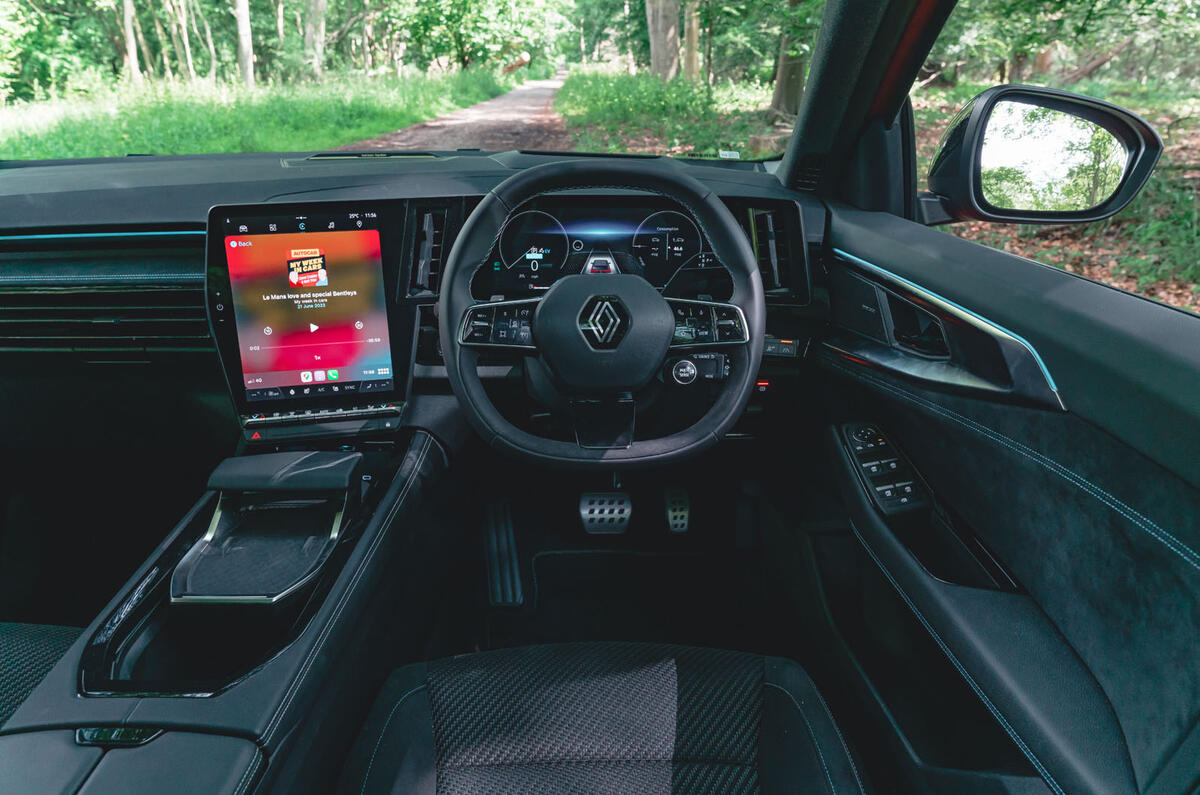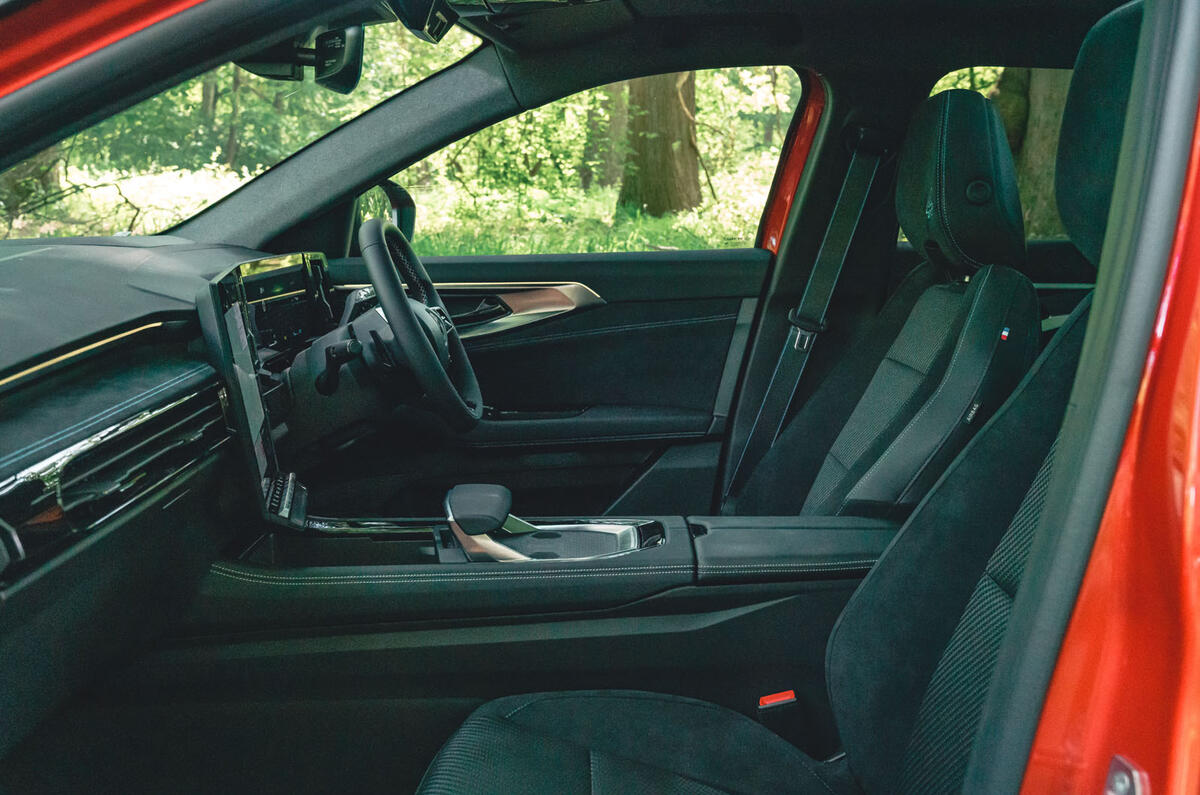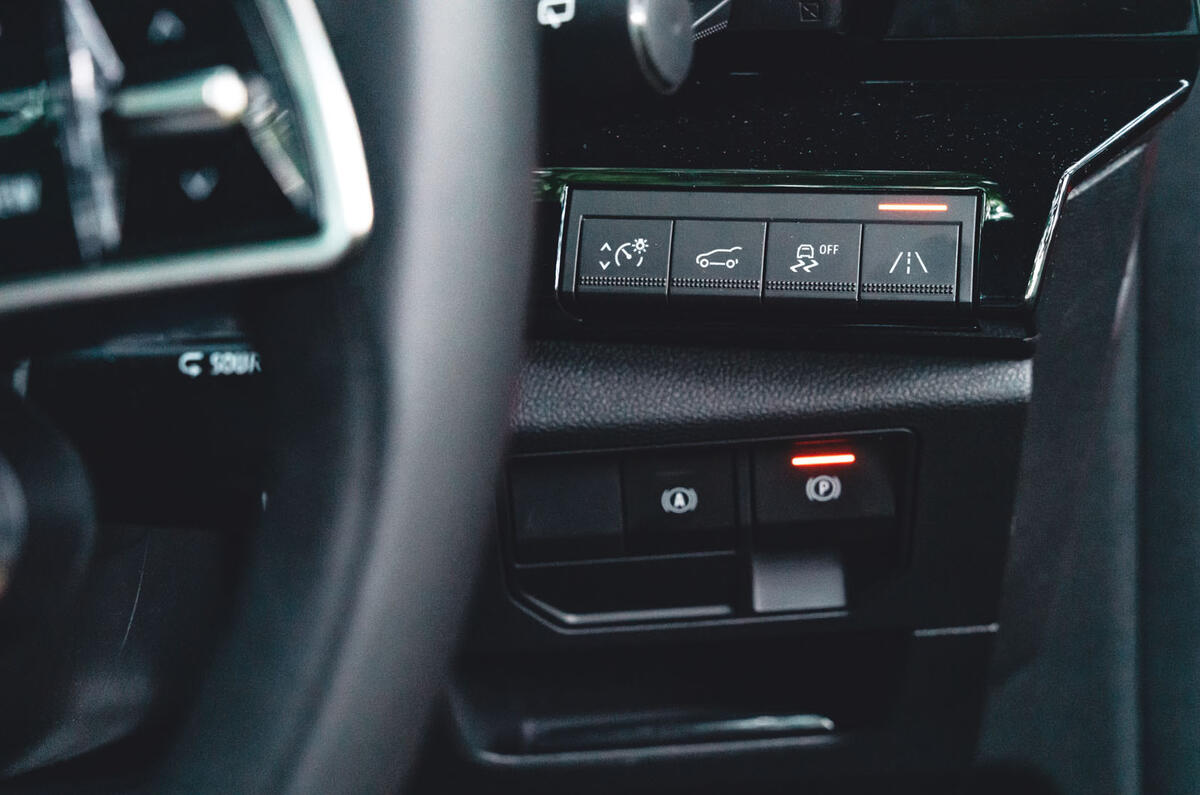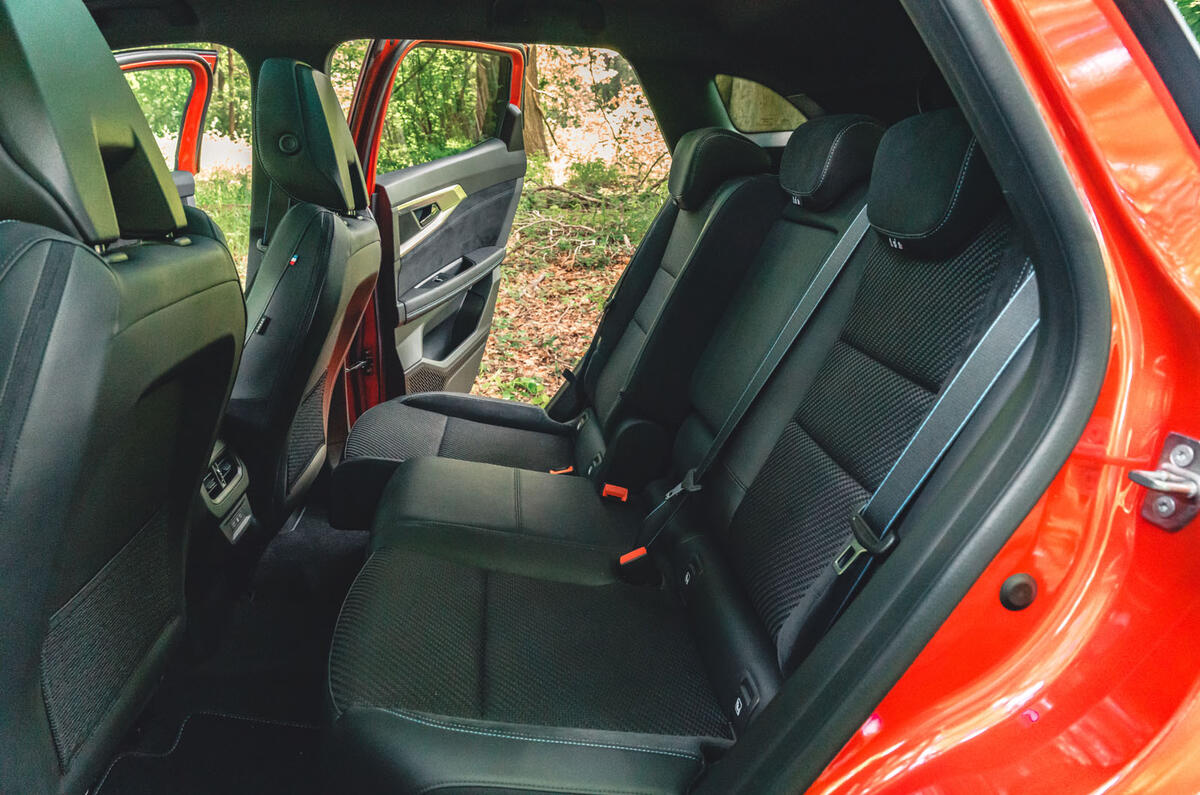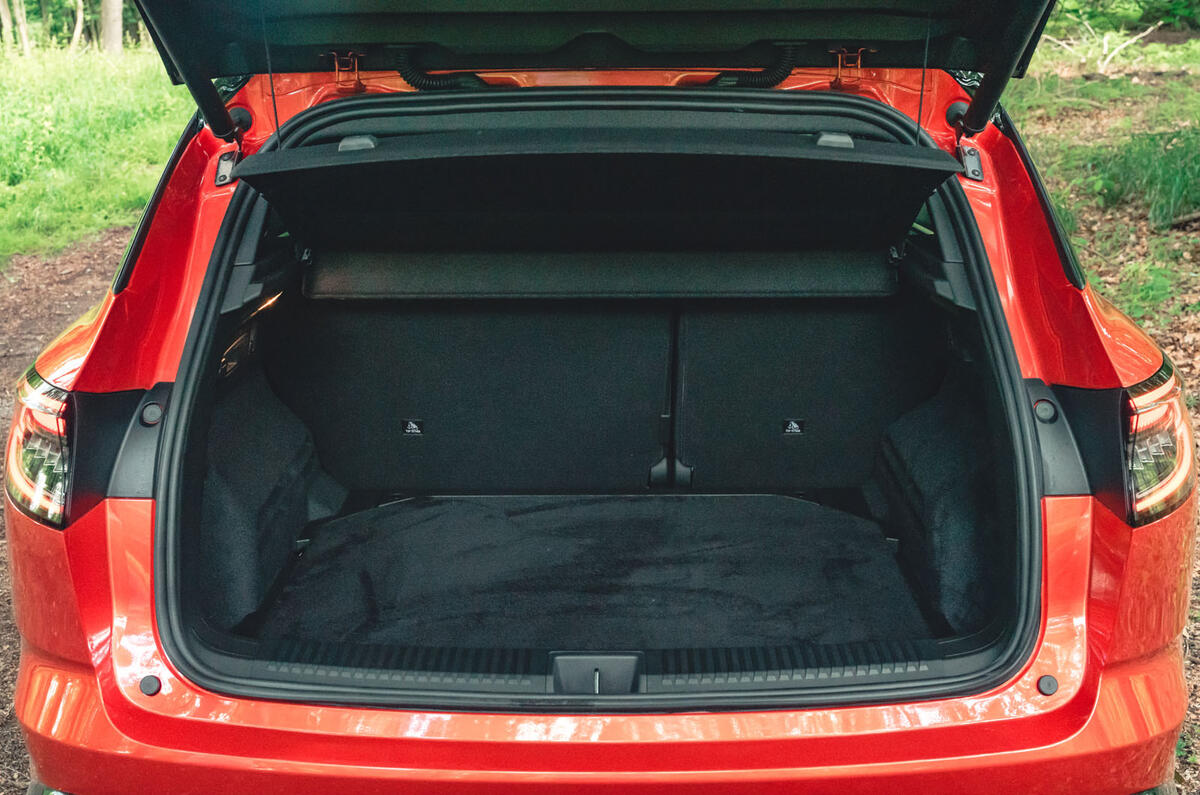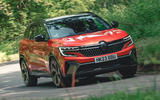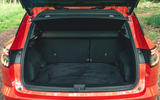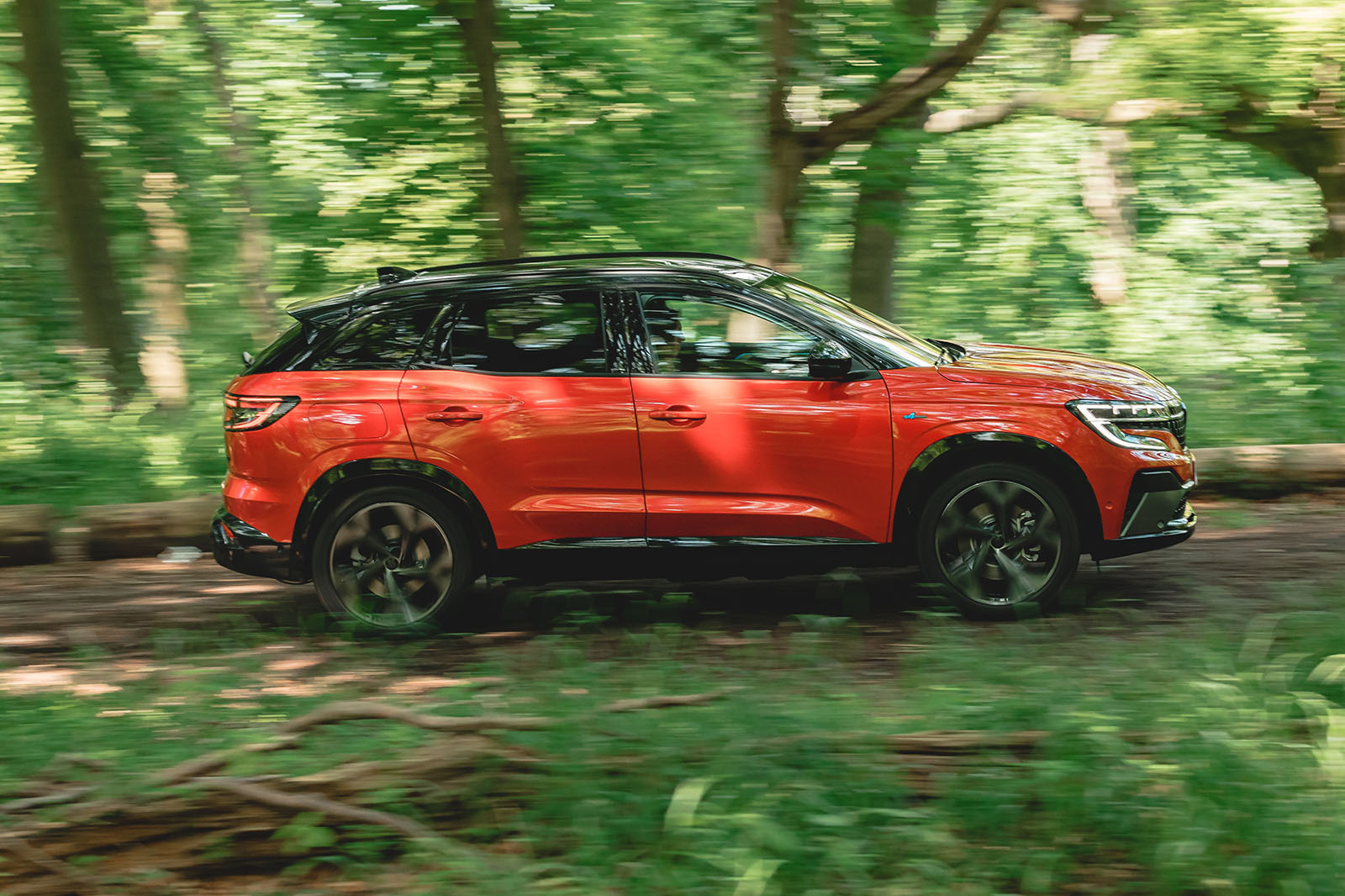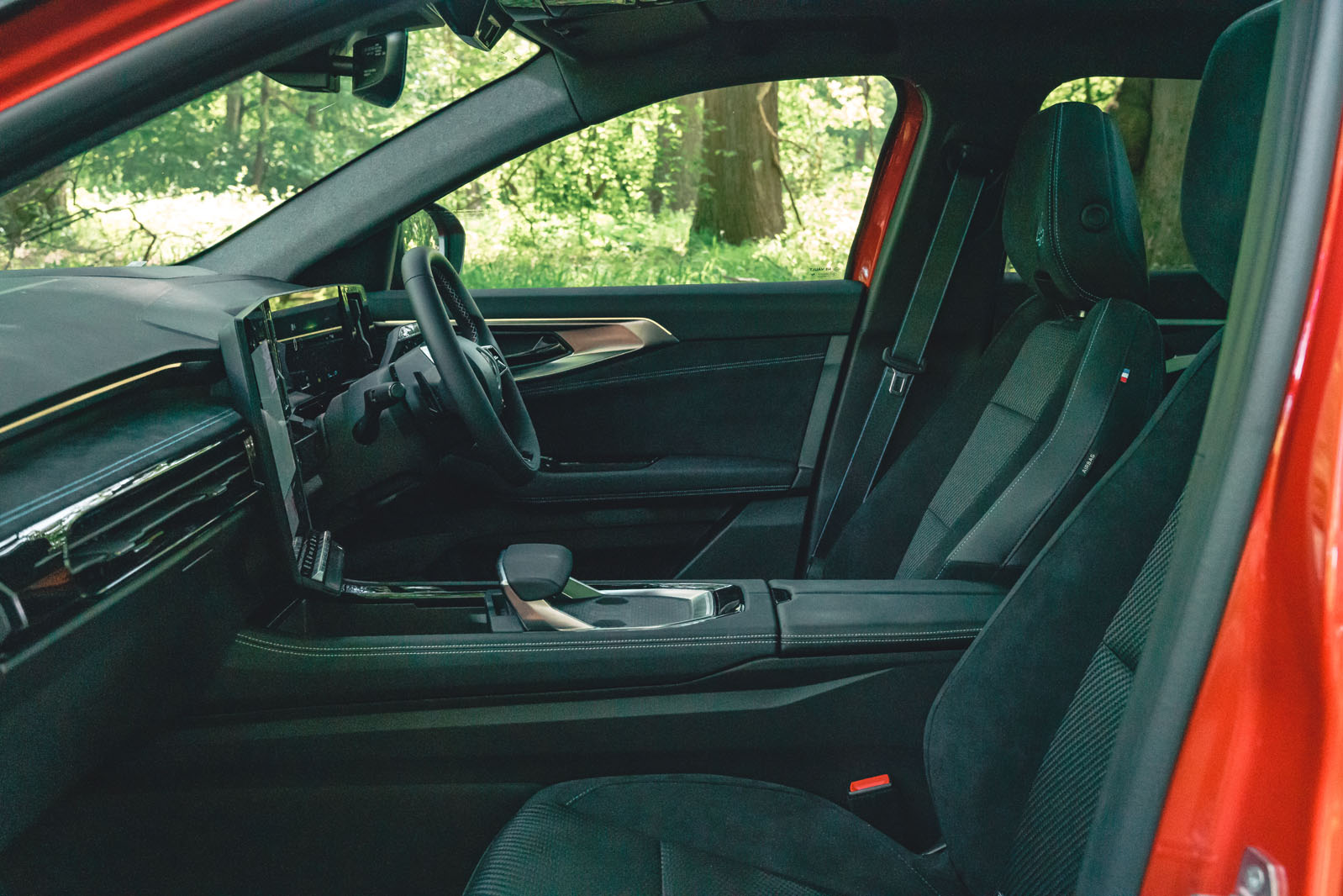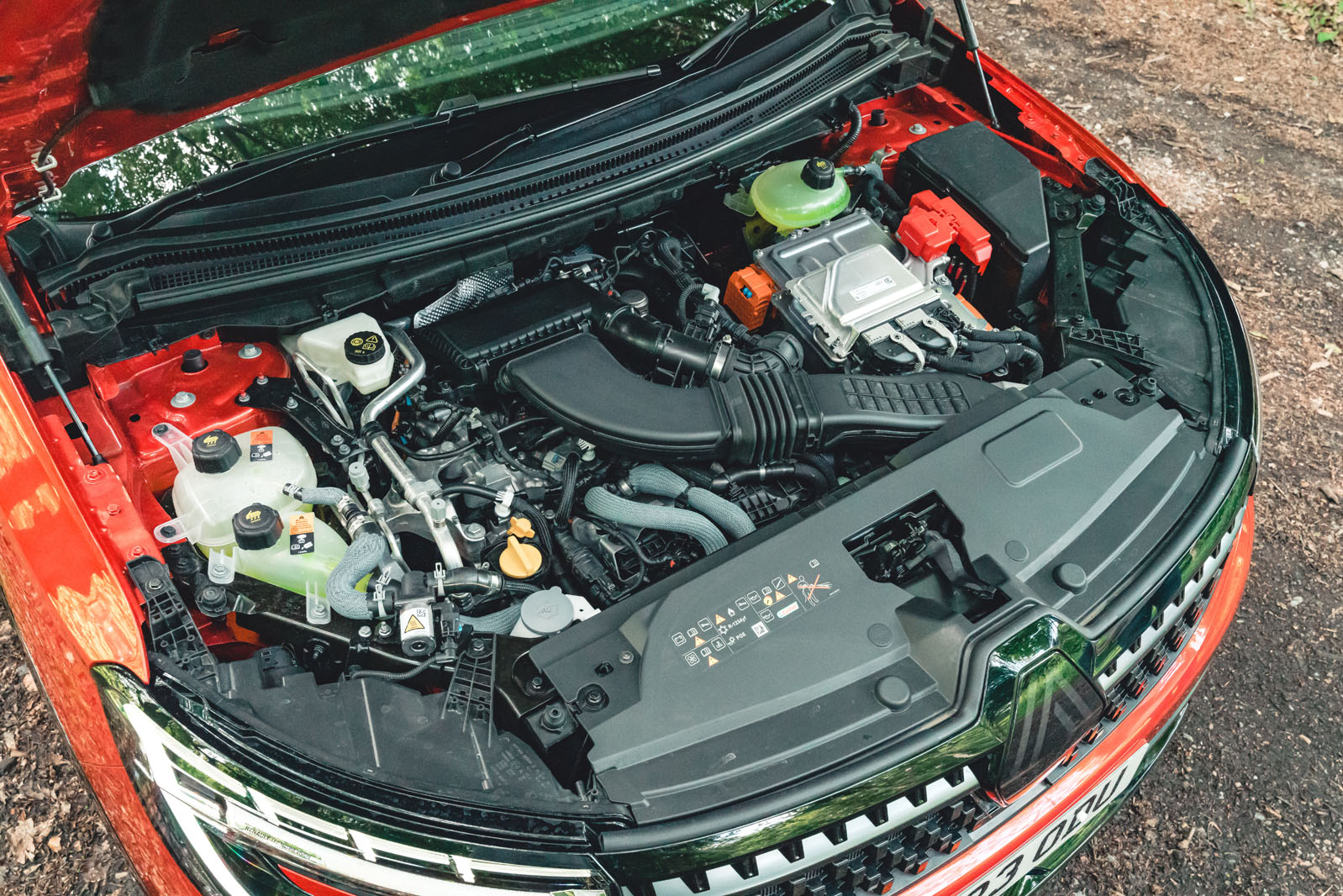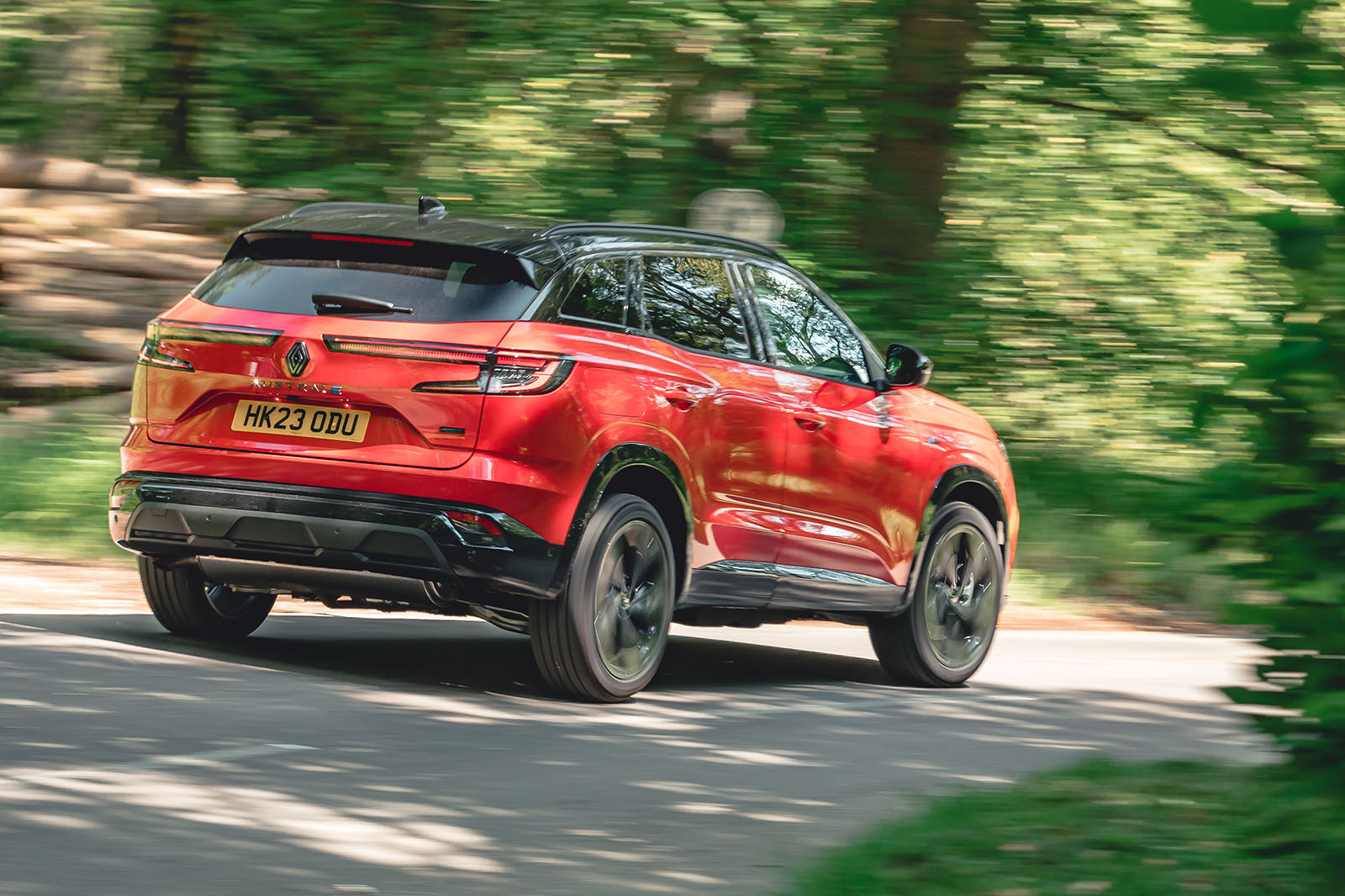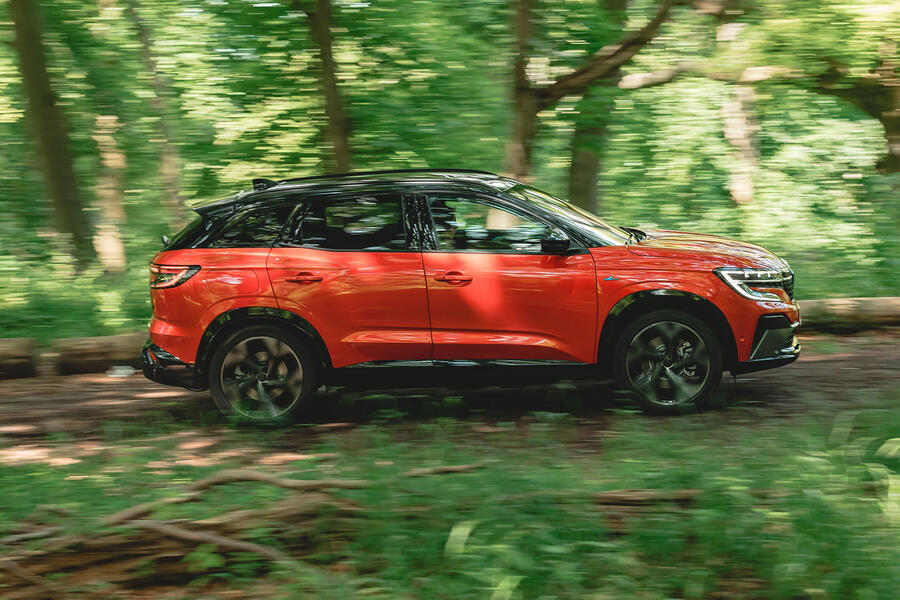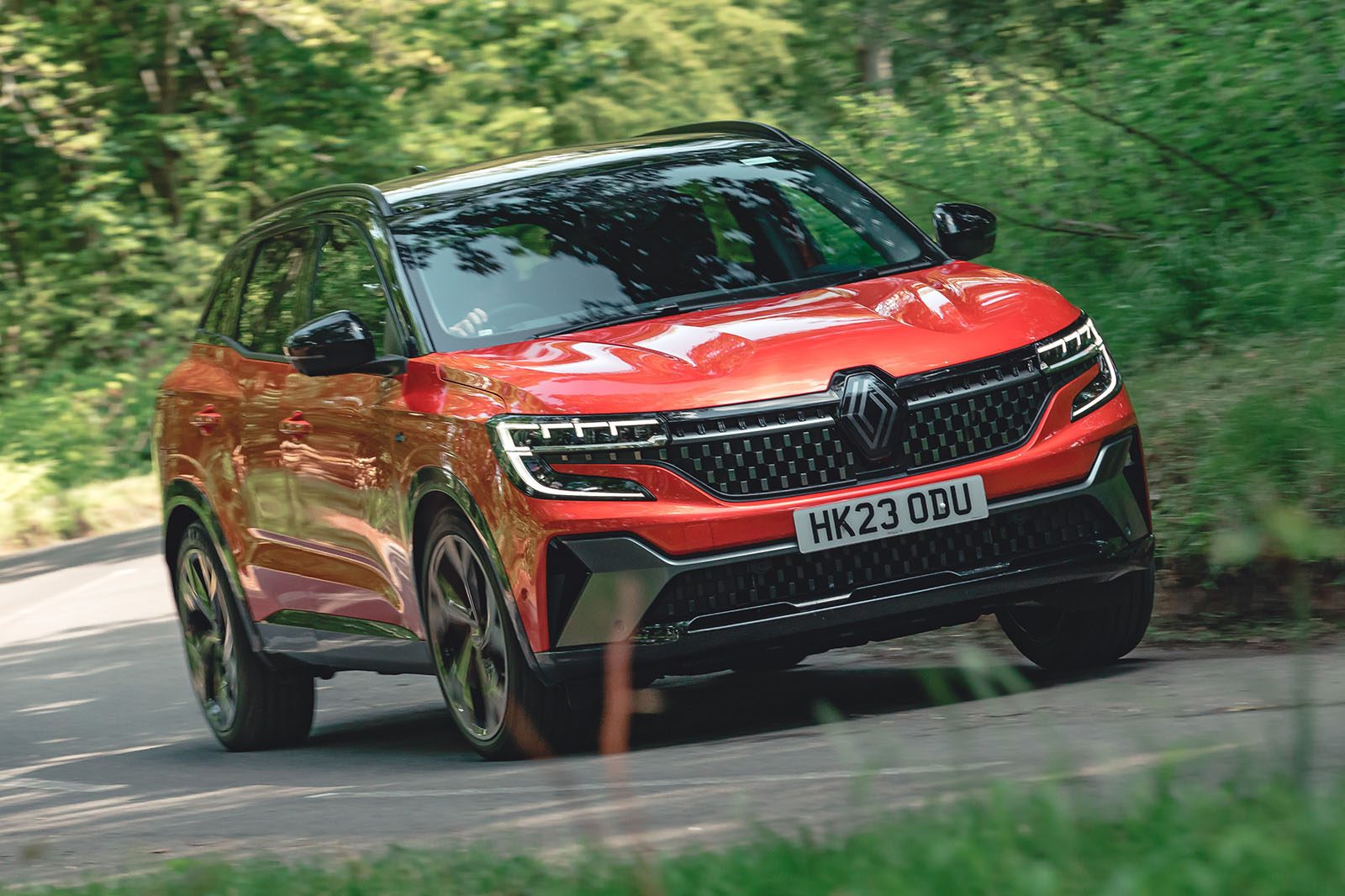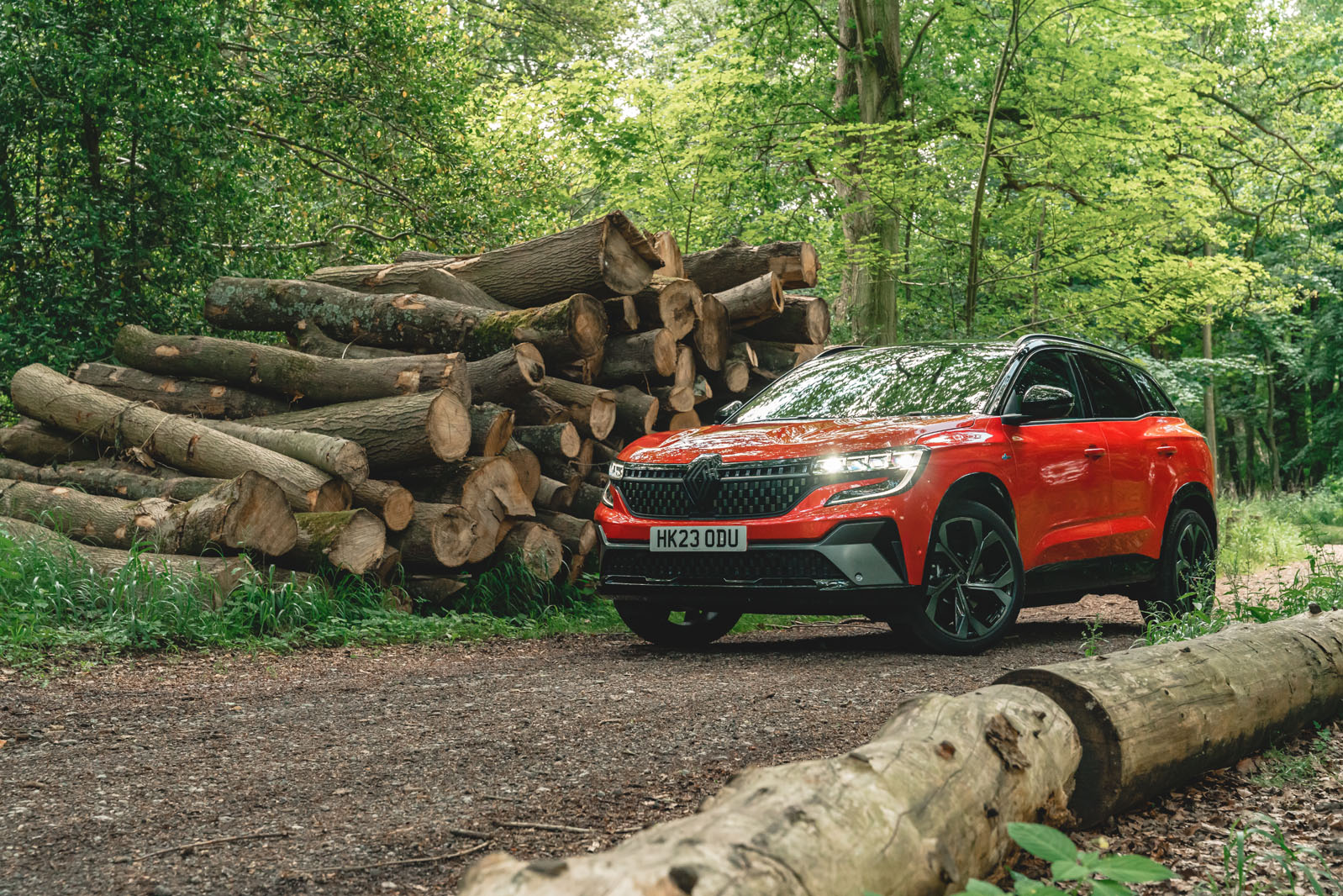Like the exterior, the interior design of the Austral follows the direction set by the Mégane. It’s much more angular and layered than Renault interiors used to be, and the fascia is dominated by a black panel that has two screens and two air vents.
Where the Mégane has an excessively eclectic grab bag of materials, including some slightly unpleasant ones, the Austral strikes a better balance and everything you’re likely to see feels pleasant.
As with the technical spec, it’s remarkable how different the Austral is from the Qashqai. You won’t find a single button that’s shared between the two, and where the Nissan is more square and businesslike, the Renault is more flamboyant and techy. One isn’t necessarily better than the other, but at least it sets the two apart.
The Austral may have its tech front and centre, but Renault hasn’t neglected usability. There are rocker switches for the main climate control functions and the heater setting for the seats is fairly easily accessible on the screen.
All the buttons on the steering wheel are real buttons too. The centre console design is only a partial success. The drive selector is mounted on the column, which is very convenient when manoeuvring and liberates centre console space. The various bins aren’t especially deep, though, because they sit on top of the hybrid battery. As a result, when you want to put anything in the cupholders, you have to slide the phone tray back, making the rear storage bin inaccessible and rendering the palm rest redundant because it will be too far away from the screen.
The Austral’s rear seats offer usefully more leg room than those of the Qashqai and the Kadjar and only very slightly less than the Kia Sportage. However, the Renault can’t match the Kia for boot space, being 157 litres down. Useful as it is, the sliding rear bench can’t quite compensate for that deficit.
The rear seats also don’t fold completely flat, but the handles positioned in the boot area to release the seatbacks are a useful touch. It’s an otherwise fairly practical space, and if you choose a trim level without the Harman Kardon stereo (and its subwoofer), there is a big space under the floor that can optionally house a spacesaver wheel.

Multimedia system
We have previously tried Renault’s new Google Android Automotive-based multimedia system in the Mégane. It worked well in that car, so having the same system projected on a larger, 12.0in screen can only be a good thing, because it gives a bit more room to various shortcuts and widgets.
Being Google-based, the native navigation is Google Maps, which is excellent, and it comes with the benefit that you can simply log in to your Google account and have your home and work addresses, as well as the recent searches you made on your phone or other devices, waiting for you. There is also an app store, to which third-party services are added occasionally. One recent addition is Waze navigation. To keep everyone happy, there’s wireless Apple CarPlay and Android Auto, which integrate very well with the native interface.
Renault persists with its media stalk behind the steering wheel and it works well once you get used to it, although a physical volume and tuner button in the centre console would have been welcome.


